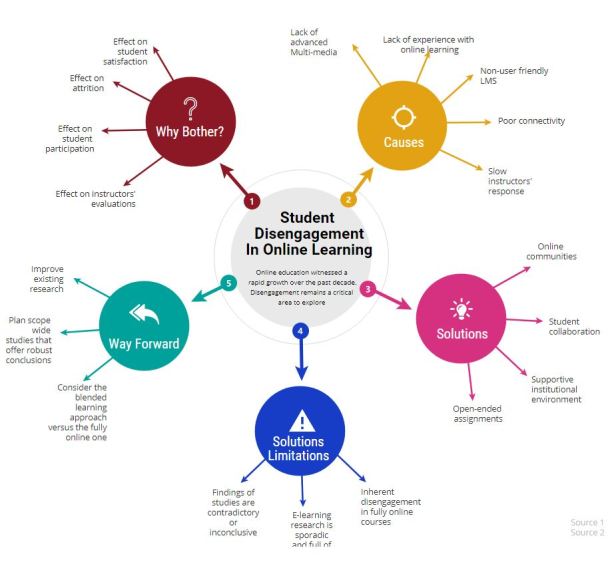By Isabella Domaradzki, Brock University
The traditional, hierarchical model of higher education in Ontario does not adequately meet the challenges of the complex modern world and prepare its students with the skills necessary to be successful within it (Granados, 2018). The passive model that dominates higher education institutions in Ontario is providing a disservice to students who require transferrable skills and meaningful, practical learning experiences for a prosperous future (Granados, 2018). The World Economic Forum maintains that higher education is a “systemic failure” which fails to provide graduates with the skills needed to solve 21st century problems (as cited in Lee-Smith, 2019). As higher education fails to evolve, graduates are left overqualified and underemployed (Lee-Smith, 2019). It is important to transform this traditional model to one that may produce innovative, critical thinkers and strong leaders in our rapidly-changing, largely technologically-driven society (Dalile, 2012). The traditional, passive model of higher education must positively transition to a progressive, active model that values the development of twenty-first century skills, global competencies and practical knowledge (Bradbury & De Maio, 2019).
Existing Debates
While some individuals hold that the traditional model is insufficient in successfully preparing students with skills and knowledge to thrive in their future careers, others argue that too much practical and focused training will disadvantage graduates who are unable to be adaptable and creative in the workforce. Summerlee, for example, argues that students must be given the skills to learn for themselves, be engaged in study that is relevant to them, and in areas of knowledge that are applicable to the world they live in (as cited in O’Flanagan, 2014). Summerlee further states that universities are under pressure to become more job-focused and relevant, thus leading to the importance of transitioning higher education from a passive learning model to an active one (as cited in O’Flanagan, 2014). However, if such changes are facing universities in the near future, the line between university and college is likely to become increasingly blurred. Given the typical shorter time for completion, increased specialization and career preparedness, and lower tuition costs, would colleges not be more favourable for students whose goal it is to enter a career with the skills, knowledge and experience that can lead to success?
In contrast to Summerlee’s view, Pettigrew (2013) suggests that there should be more concern over too much practical and focused training, rather than too little of it, which can lead to a lack of adaptability and innovation in the workforce. One must consider the possibility of bias in Pettigrew’s position as an associate professor at Cape Breton University (Pettigrew, 2013). The implementation of specialized training in university would likely require training for instructors and more funding to transform programs – can these factors have an adverse effect onto those against transformation of the traditional, passive model?
Possible Solutions
Progressive pedagogical initiatives should be considered as viable solutions in addressing the deficits in the traditional model of higher education in Ontario. Experiential learning is an example of a progressive model of learning that enables students to bridge their learned skills and their professional life after university (McPhee & Przedpelska, 2018). Experiential learning pedagogy encourages students to apply knowledge to real-world settings while developing skills that are critical to success in a wide variety of careers (Bradberry & De Maio, 2019). Furthermore, experiential learning programs contribute to student success by “improving time to graduation and increasing the likelihood of attending graduate school…or finding employment after graduation” (Bradberry & De Maio, 2019, p. 94).
Another solution to this issue lies within problem-based learning (PBL). PBL is a learner-centred educational method that encompasses active and collaborative learning which aims to develop transferrable skills and attributes while challenging students to think critically and analyze problems (Problem-Based Learning, 2019). By actively engaging with problems that are raised, learners are able to connect the learning from the class to their own lives and important issues in the world (Centre for Teaching and Learning, 2019). Experiential learning pedagogy and problem-based learning are examples of positive solutions for transforming the traditional model of higher education in Ontario to make it more engaging, meaningful, and practical for learners.
Moving Forward
There is a vital need to re-examine the values of dominant educational models in higher education with a critical lens. Perhaps the solution to improving the traditional, hierarchal model is not to completely transform the content and skills being taught, but rather, the ways they are being taught. To improve the quality of higher education, we must continue to advocate for progressive models of education that align with the complex modern world and prepare students to be successful within it.

References
Bradberry, L. A., & De Maio, J. (2019). Learning by doing: The long-term impact of experiential learning programs on student success. Journal of Political Science Education, 15(1), 94–111.
Centre for Teaching and Learning (2019). Problem-Based Learning. Queen’s University. Retrieved September 24, 2019, from https://www.queensu.ca/ctl/teaching-support/instructional-strategies/problem-based-learning.
Dalile, L. (2012, June 10). How schools are killing creativity. Huffington Post. Retrieved September 24, 2019, from https://www.huffpost.com/entry/a-dictator-racing-to-nowh_b_1409138.
Granados, J. (2018, May 30). The challenges of higher education in the 21st century. Retrieved September 29, 2019, from http://www.guninetwork.org/articles/challenges-higher-education-21st-century.
Lee-Smith, M. (2019, May 3). Is higher education failing to evolve into the 21st century? Retrieved September 24, 2019, from https://www.studyinternational.com/news/is-higher-education-failing-to-evolve-into-the-21st-century/
McPhee, S., & Przedpelska, S. (2018). Experiential learning, community engagement, and student experience: Undergraduate field school course in rural British Columbia. Canadian Geographer, 62(3), 372–383.
O’Flanagan, R. (2014, February 26). Universities will change or face extinction. The Record. Online at https://www.therecord.com/news-story/4386347-universities- will-change-or-face-extinction-outgoing-university-of-guelph-president/
Pettigrew, T. (2013, March 18). Where universities have really failed. Macleans. http://www.macleans.ca/work/jobs/where-universities-have-really-failed/
Problem Based Learning (2019). Retrieved from https://udlresource.ca/2017/12/problem-based-learning/.






